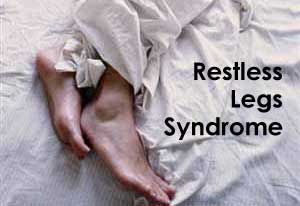- Home
- Editorial
- News
- Practice Guidelines
- Anesthesiology Guidelines
- Cancer Guidelines
- Cardiac Sciences Guidelines
- Critical Care Guidelines
- Dentistry Guidelines
- Dermatology Guidelines
- Diabetes and Endo Guidelines
- Diagnostics Guidelines
- ENT Guidelines
- Featured Practice Guidelines
- Gastroenterology Guidelines
- Geriatrics Guidelines
- Medicine Guidelines
- Nephrology Guidelines
- Neurosciences Guidelines
- Obs and Gynae Guidelines
- Ophthalmology Guidelines
- Orthopaedics Guidelines
- Paediatrics Guidelines
- Psychiatry Guidelines
- Pulmonology Guidelines
- Radiology Guidelines
- Surgery Guidelines
- Urology Guidelines
Iron Therapy reduces disease severity in restless legs syndrome

USA: Iron therapy may improve both disease severity, as well as restlessness in patients with restless legs syndrome (RLS), compared to placebo, according to results of a Cochrane Review.
The study led by Lynn M Trotti, Department of Neurology, Emory University School of Medicine, Atlanta, USA, aimed to evaluate the efficacy and safety of oral or parenteral iron for the treatment of RLS when compared with placebo or other therapies.
The study authors searched for controlled trials published in the Cochrane Central Register of Controlled Trials (CENTRAL), MEDLINE, Embase, PsycNFO, and CINAHL between January 1995 and September 2017. The primary endpoint of the study was restlessness or sensations that were unpleasant, which were subjectively reported by the patient.
The study authors identified 10 studies with a total of 428 patients which were followed anywhere between 2 and 16 weeks. The International Restless Legs Scale (IRLS; range: 0–40) was used to quantify the primary outcome in 8 of the trials while the ninth trial utilized a different RLS symptom scale. In 9 of the studies analyzed, iron therapy was compared to placebo while one study compared it to the dopamine agonist pramipexole.
Key Findings:
- Combining data from the seven trials using the IRLS to compare iron and placebo, use of iron resulted in greater improvement in IRLS scores (MD ‐3.78, 95% CI ‐6.25 to ‐1.31; I2= 66%, 7 studies, 345 participants) measured 2 to 12 weeks after treatment.
- Including an eighth study, which measured restlessness using a different scale, use of iron remained beneficial compared to placebo (SMD ‐0.74, 95% CI ‐1.26 to ‐0.23; I2 = 80%, 8 studies, 370 participants). The GRADE assessment of certainty for this outcome was moderate.
- The single study comparing iron to a dopamine agonist (pramipexole) found a similar reduction in RLS severity in the two groups (MD ‐0.40, 95% CI ‐5.93 to 5.13, 30 participants).
- Iron did not improve quality of life as a dichotomous measure (RR 2.01, 95% CI 0.54 to 7.45; I2=54%, 2 studies, 39 participants), but did improve quality of life measured on continuous scales (SMD 0.51, 95% CI 0.15 to 0.87; I2= 0%, 3 studies, 128 participants), compared to placebo.
- Subjective sleep quality was no different between iron and placebo groups (SMD 0.19, 95% CI ‐0.18 to 0.56; I2 = 9%, 3 studies, 128 participants), nor was objective sleep quality, as measured by change in sleep efficiency in a single study (‐35.5 +/‐ 92.0 versus ‐41.4 +/‐ 98.2, 18 participants).
- Periodic limb movements of sleep were not significantly reduced with iron compared to placebo ( SMD ‐0.19, 95% CI ‐0.70 to 0.32; I2 = 0%, 2 studies, 60 participants).
- Iron did not improve sleepiness compared to placebo, as measured on the Epworth Sleepiness Scale (data not provided, 1 study, 60 participants) but did improve the daytime tiredness item of the RLS‐6 compared to placebo (least squares mean difference ‐1.5, 95% CI ‐2.5 to ‐0.6; 1 study, 110 participants). The GRADE rating for secondary outcomes ranged from low to very low.
- Prespecified subgroup analyses showed more improvement with iron in those trials studying participants on dialysis.
- The use of low serum ferritin levels as an inclusion criterion and the use or oral versus intravenous iron did not show significant subgroup differences.
- Iron did not result in significantly more adverse events than placebo (RR 1.48, 95% CI 0.97 to 2.25; I2=45%, 6 studies, 298 participants).
- A single study reported that people treated with iron therapy experienced fewer adverse events than the active comparator pramipexole.
"Overall, the studies showed that iron is better than a placebo for reducing the severity of restless legs syndrome symptoms, although the benefit was low to moderate," the authors concluded, adding that "Iron was helpful even if blood iron levels were normal at the start of the study." More studies are needed, however, to determine which RLS patients would benefit the most, the type of iron to use and for what treatment duration.
For further reference follow the link: 10.1002/14651858.CD007834.pub3

Disclaimer: This site is primarily intended for healthcare professionals. Any content/information on this website does not replace the advice of medical and/or health professionals and should not be construed as medical/diagnostic advice/endorsement or prescription. Use of this site is subject to our terms of use, privacy policy, advertisement policy. © 2020 Minerva Medical Treatment Pvt Ltd